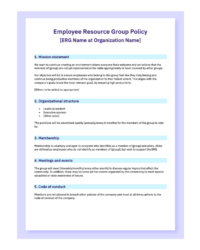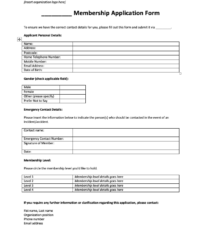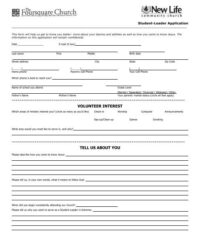Utilizing a pre-designed structure streamlines the process for both applicants and reviewers. It ensures all essential information is gathered, reducing back-and-forth communication and minimizing the risk of incomplete submissions. This efficiency allows administrators to focus on evaluating the merits of each application rather than chasing missing details. Furthermore, it provides applicants with a clear understanding of expectations, increasing the likelihood of successful registration.
This foundation enables a deeper exploration of key topics related to establishing and managing student groups. Considerations such as constitutional requirements, effective leadership strategies, and successful event planning become more accessible when built upon this structured framework.
Key Components of a Student Organization Application
Essential elements typically requested within a standardized application framework for student groups are outlined below. These components provide a comprehensive overview of the proposed organization and facilitate informed evaluation by institutional administrators.
1: Organization Name: A clear, concise, and distinguishable name is crucial for identification and record-keeping.
2: Mission Statement: A succinct declaration of the group’s purpose and goals provides insight into its intended impact on the campus community.
3: Objectives and Activities: A detailed description of planned activities demonstrates the organization’s alignment with its stated mission and clarifies its anticipated contribution to student life.
4: Membership Requirements: Clear criteria for membership ensure inclusivity and manage expectations for prospective members.
5: Leadership Structure: Identification of key leadership roles and responsibilities establishes accountability and organizational stability.
6: Constitution or Bylaws: Formalized governing documents establish operational procedures and guidelines for internal decision-making.
7: Advisor Information: Faculty or staff advisor details ensure appropriate guidance and institutional oversight.
8: Funding Sources: Information regarding planned fundraising activities or existing financial resources demonstrates sustainability and responsible resource management.
These components provide a framework for assessing the viability and potential contribution of new student organizations. Thorough completion of each section ensures a transparent and efficient registration process.
How to Create a Student Organization Application Template
Developing a standardized application template ensures consistency and efficiency in the registration process for new student groups. A well-designed template facilitates the collection of essential information, enabling informed evaluation and streamlined approval procedures.
1: Define Purpose and Scope: Clarify the specific objectives of the application process and the types of organizations it aims to accommodate. This foundational step ensures the template remains relevant and focused.
2: Gather Essential Information Categories: Determine the key data points required for a comprehensive understanding of the proposed organization, including its mission, activities, membership, and leadership structure.
3: Structure the Template Logically: Organize information categories into a clear, sequential format, facilitating ease of completion for applicants and efficient review by administrators.
4: Develop Clear Instructions: Provide concise and unambiguous instructions for each section, minimizing potential confusion and ensuring complete submissions.
5: Utilize Standardized Formatting: Consistent formatting enhances readability and professionalism. Employing clear fonts, headings, and spacing contributes to a user-friendly experience.
6: Incorporate Legal and Policy Compliance: Ensure adherence to institutional policies and relevant legal regulations regarding student organizations. This safeguards both the institution and the applying groups.
7: Test and Refine: Pilot testing the template with a sample group identifies potential areas for improvement and ensures optimal functionality before widespread implementation.
A robust template provides a crucial framework for establishing new student organizations within an educational institution. Careful consideration of these steps ensures a transparent, efficient, and effective registration process, fostering a vibrant and engaging campus environment.
Standardized application frameworks provide essential structure and guidance for establishing student organizations within educational institutions. These templates streamline the registration process, ensuring consistent information gathering and efficient evaluation. Key components, including mission statements, activity descriptions, and leadership structures, offer a comprehensive overview of prospective groups. Careful template design, incorporating clear instructions and logical formatting, facilitates both applicant completion and administrative review. Adherence to institutional policies and legal regulations ensures a compliant and transparent registration process.
Effective implementation of these frameworks empowers students to create vibrant and impactful organizations that enrich campus life. These structured processes contribute to a thriving ecosystem of student engagement, fostering leadership development, community building, and the pursuit of shared interests. By providing a clear pathway for organizational establishment, institutions cultivate an environment where student initiative and collaboration flourish.


